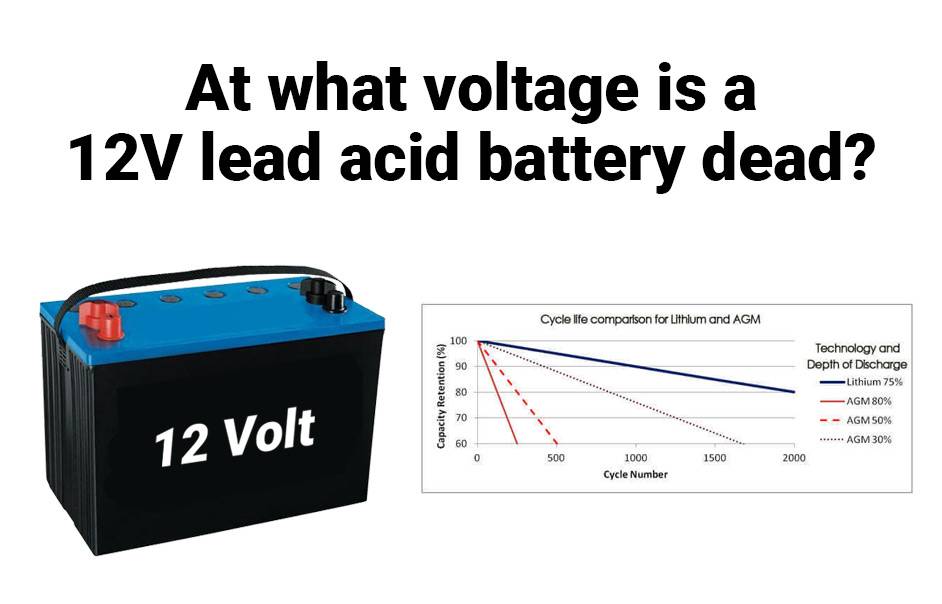- Lithium Golf Cart Battery
- Forklift Lithium Battery
-
48V
- 48V 210Ah
- 48V 300Ah
- 48V 420Ah (949 x 349 x 569 mm)
- 48V 420Ah (950 x 421 x 450 mm)
- 48V 456Ah
- 48V 460Ah (830 x 630 x 590 mm)
- 48V 460Ah (950 x 421 x 450 mm)
- 48V 460Ah (800 x 630 x 600 mm)
- 48V 460Ah (820 x 660 x 470 mm)
- 48V 500Ah
- 48V 560Ah (810 x 630 x 600 mm)
- 48V 560Ah (950 x 592 x 450 mm)
- 48V 600Ah
- 48V 630Ah
-
48V
- 12V Lithium Battery
12V 150Ah Lithium RV Battery
Bluetooth App | BCI Group 31
LiFePO4 Lithium
Discharge Temperature -20°C ~ 65°C
Fast Charger 14.6V 50A
Solar MPPT Charging - 24V Lithium Battery
- 36V Lithium Battery
- 48V Lithium Battery
-
48V LiFePO4 Battery
- 48V 50Ah
- 48V 50Ah (for Golf Carts)
- 48V 60Ah (8D)
- 48V 100Ah (8D)
- 48V 100Ah
- 48V 100Ah (Discharge 100A for Golf Carts)
- 48V 100Ah (Discharge 150A for Golf Carts)
- 48V 100Ah (Discharge 200A for Golf Carts)
- 48V 150Ah (for Golf Carts)
- 48V 160Ah (Discharge 100A for Golf Carts)
- 48V 160Ah (Discharge 160A for Golf Carts)
-
48V LiFePO4 Battery
- 60V Lithium Battery
-
60V LiFePO4 Battery
- 60V 20Ah
- 60V 30Ah
- 60V 50Ah
- 60V 50Ah (Small Size / Side Terminal)
- 60V 100Ah (for Electric Motocycle, Electric Scooter, LSV, AGV)
- 60V 100Ah (for Forklift, AGV, Electric Scooter, Sweeper)
- 60V 150Ah (E-Motocycle / E-Scooter / E-Tricycle / Tour LSV)
- 60V 200Ah (for Forklift, AGV, Electric Scooter, Sweeper)
-
60V LiFePO4 Battery
- 72V~96V Lithium Battery
- Rack-mounted Lithium Battery
- E-Bike Battery
- All-in-One Home-ESS
- Wall-mount Battery ESS
-
Home-ESS Lithium Battery PowerWall
- 24V 100Ah 2.4kWh PW24100-S PowerWall
- 48V 50Ah 2.4kWh PW4850-S PowerWall
- 48V 50Ah 2.56kWh PW5150-S PowerWall
- 48V 100Ah 5.12kWh PW51100-F PowerWall (IP65)
- 48V 100Ah 5.12kWh PW51100-S PowerWall
- 48V 100Ah 5.12kWh PW51100-H PowerWall
- 48V 200Ah 10kWh PW51200-H PowerWall
- 48V 300Ah 15kWh PW51300-H PowerWall
PowerWall 51.2V 100Ah LiFePO4 Lithium Battery
Highly popular in Asia and Eastern Europe.
CE Certification | Home-ESS -
Home-ESS Lithium Battery PowerWall
- Portable Power Stations
At What Voltage Is A 12v Lead Acid Battery Dead?

Lead acid batteries, not lithium batteries, are among the most versatile and widely used power sources, offering reliable energy for vehicles, marine applications, and home backup systems. Understanding these batteries’ voltage, state of charge, and lifespan is crucial for optimizing their performance and longevity. In this article, we delve into the intricacies of lead acid batteries, providing expert insights and practical tips for maximizing their effectiveness.
Understanding voltage and state of charge
The voltage of a lead acid battery is a critical indicator of its state of charge (SoC) and overall health. It is influenced by several factors, including temperature, age, and usage patterns. Voltage is a measure of the electrical potential difference between the battery’s terminals, and it changes based on the battery’s charge level. As the battery discharges, the voltage decreases, while charging causes it to rise.
For a 12V lead acid battery, a fully charged state typically corresponds to a voltage of 12.6-12.8V. Conversely, a fully discharged battery may exhibit a voltage as low as 11.8V or lower, depending on various conditions. Monitoring voltage regularly allows users to gauge the battery’s SoC and take necessary actions to maintain its health.
The factors that affect battery voltage
Multiple factors can influence the voltage of a lead acid battery:
- Temperature: Temperature extremes can cause significant fluctuations in battery voltage. High temperatures tend to increase voltage readings, while low temperatures decrease them. This phenomenon is due to the chemical nature of the battery’s electrolyte, which becomes more reactive at higher temperatures.
- State of Charge: The SoC directly affects the battery’s voltage. As the battery discharges, the voltage drops, and as it charges, the voltage increases. However, a battery’s voltage might not return to its original fully charged level after several charge-discharge cycles, indicating a decrease in capacity.
- Battery Age and Condition: Over time, a lead acid battery’s capacity diminishes due to chemical degradation. As the battery ages, its ability to hold a charge decreases, leading to lower voltage readings even when fully charged. Regular maintenance and proper usage can slow down this degradation process.
- External Loads and Connections: High electrical loads or poor connections can cause voltage drops, leading to inaccurate readings. Ensuring all connections are secure and avoiding excessive loads can help maintain stable voltage levels.

What happens when a lead acid battery is discharged?
Discharging a lead acid battery initiates a series of chemical reactions within its cells, converting stored chemical energy into electrical energy. During discharge, sulfuric acid in the electrolyte reacts with lead plates to form lead sulfate. This reaction reduces the electrolyte’s ability to generate electricity, leading to a gradual decline in voltage.
If a battery is left discharged for an extended period, lead sulfate crystals can harden on the plates, a condition known as sulfation. Sulfation significantly reduces the battery’s capacity and efficiency, often leading to irreversible damage. To prevent sulfation, it’s important to recharge the battery promptly after use and avoid deep discharges whenever possible.
How to measure the voltage of a 12V lead acid battery
Measuring the voltage of a 12V lead acid battery is a straightforward process that provides valuable insights into the battery’s charge level. Here’s how you can do it:
- Using a Voltmeter or Multimeter: Set the device to measure DC voltage. Connect the positive probe to the battery’s positive terminal and the negative probe to the negative terminal.
- Interpreting the Reading: A voltage reading of 12.6-12.8V indicates a fully charged battery. Readings below this range suggest that the battery is partially discharged and may require recharging.
- Consider Load Testing: While voltage readings provide a general indication of SoC, they do not fully reveal the battery’s health or capacity. Conducting a load test or using a battery capacity tester can provide a more comprehensive assessment.
At what voltage is a 12V lead acid battery considered dead?
Determining when a 12V lead acid battery is “dead” is crucial for ensuring reliable power supply. Here are key points to consider:
- Full Charge Voltage: A fully charged 12V lead acid battery typically reads around 12.6-12.8V. As the battery discharges, the voltage gradually decreases.
- Dead Voltage Threshold: Generally, a 12V lead acid battery is considered dead when its voltage drops below 10-10.5V under load. At this point, the battery may no longer be able to power devices effectively and should be recharged or replaced.
- Manufacturer Guidelines: Different manufacturers may have specific recommendations regarding the minimum voltage threshold for their batteries. Consulting the battery’s documentation is advisable for precise information.

Tips for prolonging the life of your lead acid battery
Proper maintenance is key to extending the lifespan of a lead acid battery. Here are some expert tips:
- Regular Charging: To maintain optimal performance, charge your battery frequently. Avoid letting it sit idle for extended periods without recharging, as this can lead to sulfation and capacity loss.
- Avoid Over-Discharging: Recharging the battery before it drops below 50% of its capacity can significantly extend its lifespan. Deep discharges are particularly harmful to lead acid batteries.
- Use a Compatible Charger: Ensure that you use a charger designed specifically for lead acid batteries. Using the wrong charger can result in overcharging or undercharging, both of which can damage the battery.
- Keep the Battery Clean and Dry: Dirt and corrosion on the terminals can hinder conductivity and lead to performance issues. Regularly clean the terminals with a mixture of baking soda and water to prevent corrosion.
- Store in a Cool Place: Extreme temperatures can damage lead acid batteries. Store the battery in a cool, dry place to prevent heat or cold-induced degradation.
- Check Electrolyte Levels: For flooded lead-acid batteries, periodically check the electrolyte levels and top up with distilled water if necessary. This helps maintain the battery’s internal chemistry and prolongs its life.
- Handle with Care: Lead acid batteries contain hazardous materials. Handle them with care to avoid spills, leaks, or damage to the battery casing.

Remember that proper maintenance practices are key to ensuring the functionality and durability of any rechargeable battery, so incorporate these suggestions into your regular upkeep routines today!
FAQs
How can lithium-ion chemistries with different nominal voltages be incompatible with regular Li-ion batteries in terms of cell count and charging algorithm?
Lithium-ion chemistries with distinct nominal voltages, such as phosphate-based lithium-ion and lithium-titanate, may be incompatible with regular Li-ion batteries due to significant differences in voltage characteristics. These variations result in challenges related to cell count and charging algorithm utilization, making it impractical to intermix them seamlessly within the same battery system. The nominal cell voltage discrepancies between these different lithium-ion chemistries alter the standard requirements for cell count and charging protocols, which can ultimately hinder their integration and efficient operation when combined in the same setup.
What are the nominal voltages of common types of batteries, such as lead acid, nickel-based, and lithium-ion?
Common types of batteries have specific nominal voltages assigned by manufacturers. For lead acid batteries, the nominal voltage is typically 2 volts per cell, with the open circuit voltage of a charged and rested battery measuring about 2.1 volts per cell. Operating lead acid batteries significantly below 2.1 volts per cell can lead to sulfation buildup. During float charge, lead acid batteries usually measure around 2.25 volts per cell.
Moving on to nickel-based batteries like NiCd and NiMH, in consumer applications, they are usually rated at 1.20 volts per cell. However, industrial, aviation, and military batteries may follow the original 1.25 volts per cell standard. The difference in voltage rating between 1.20V and 1.25V cells is primarily a matter of preference in marking.
For lithium-ion batteries, the nominal voltage is typically 3.60 volts per cell. Some manufacturers may label their lithium-ion cells as 3.70 volts per cell or higher for marketing purposes. While the higher voltage can increase watt-hours on paper, this can result in unfamiliar voltage references when connecting multiple cells in series. In general, equipment manufacturers tend to adhere to the standard nominal cell voltage of 3.60 volts for most lithium-ion systems used as a power source.
How does a battery produce voltage potential?
A battery generates voltage potential through an electrochemical process involving the use of metals with varying affinities placed in an acid solution known as an electrolyte. This arrangement leads to the development of an open circuit voltage (OCV) as a result of the electrochemical reaction between the metals and the electrolyte used. The specific combination of metals and electrolytes determines the magnitude of the voltage potential produced by the battery.
How does charging and discharging affect the voltage behavior of a battery?
Charging and discharging play crucial roles in shaping the voltage behavior of a battery. When a battery is charged, it undergoes a process where electrical energy is converted into stored chemical energy, leading to an increase in voltage levels. Conversely, during discharge, the stored chemical energy is converted back into electrical energy, causing a gradual decrease in voltage. These cycles of charging and discharging impact the battery’s overall performance, state of charge, and lifespan. Monitoring these behaviors is essential for maintaining the battery’s health and optimizing its functionality over time.
Furthermore, the voltage behavior under a load and charge is governed by the current flow and the internal battery resistance. A low resistance in the battery produces minimal fluctuation under load or charge, ensuring stable voltage levels. Conversely, a high resistance within the battery can lead to excessive voltage swings, affecting the battery’s performance and efficiency. The process of charging and discharging not only influences the voltage levels but also agitates the battery, requiring up to 24 hours for full voltage stabilization. Understanding these intricate dynamics is crucial for ensuring the longevity and optimal functioning of the battery.
More FAQs
1. What are the specific voltage ranges for different states of charge in a 12V Gel battery?
- 100%: 12.8 – 13.0V
- 75%: 12.5V
- 50%: 12.2V
- 25%: 11.9V
- 0%: 11.8V
2. What are the specific voltage ranges for different states of charge in a 12V AGM battery?
- 100%: 12.7 – 12.8V
- 75%: 12.4V
- 50%: 12.2V
- 25%: 12.0V
- 0%: 11.8V
3. How can you determine the remaining capacity of a 12V AGM battery based on its voltage?
Check the voltage and compare it to a state-of-charge chart: higher voltage indicates more charge. For example, 12.4V usually indicates 75% charge, while 12.0V indicates about 25%.
4. What does a 12V lead-acid battery voltage chart indicate about battery capacity?
A voltage chart shows the correlation between battery voltage and state of charge. Higher voltage corresponds to higher capacity, while lower voltage indicates depleted charge.
5. How does the state of charge (SoC) value change as a battery ages?
As a battery ages, its SoC voltage readings decrease for the same level of charge due to decreased capacity and efficiency.
6. How does temperature and cell material impact voltage readings in lead-acid batteries?
Temperature affects voltage; colder temperatures reduce voltage, while warmer temperatures increase it. Cell material affects efficiency and voltage stability.
7. What factors affect voltage measurements in lead-acid batteries?
Factors include temperature, battery age, load conditions, and state of charge. Accurate readings depend on stable conditions and proper battery maintenance.
8. Why are Gel batteries suitable for installation in locations with restricted ventilation?
Gel batteries use a silica-based gel electrolyte that minimizes gas release, making them safer and more suitable for confined spaces.
9. How do Gel batteries handle gas output and maintenance?
Gel batteries release minimal gas during operation, reducing maintenance needs. They require less frequent checking and are sealed to prevent leaks.
10. What distinguishes Gel batteries from other lead-acid batteries?
Gel batteries use a gelled electrolyte for enhanced safety and minimal maintenance, unlike liquid or AGM batteries. They excel in deep discharge and restricted ventilation environments.
























